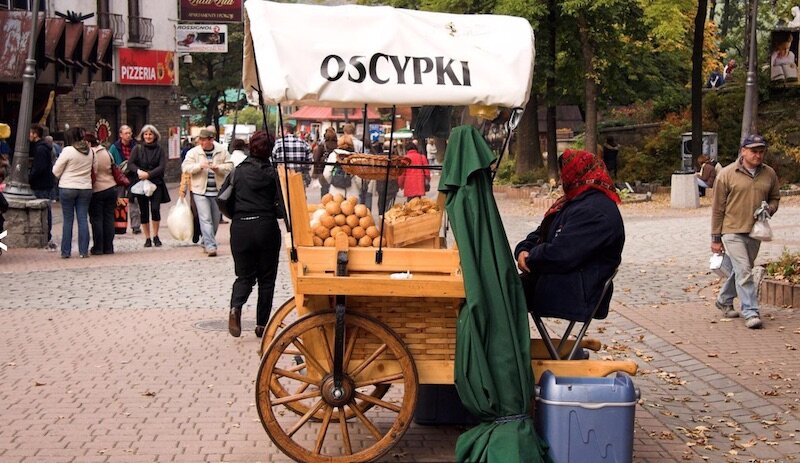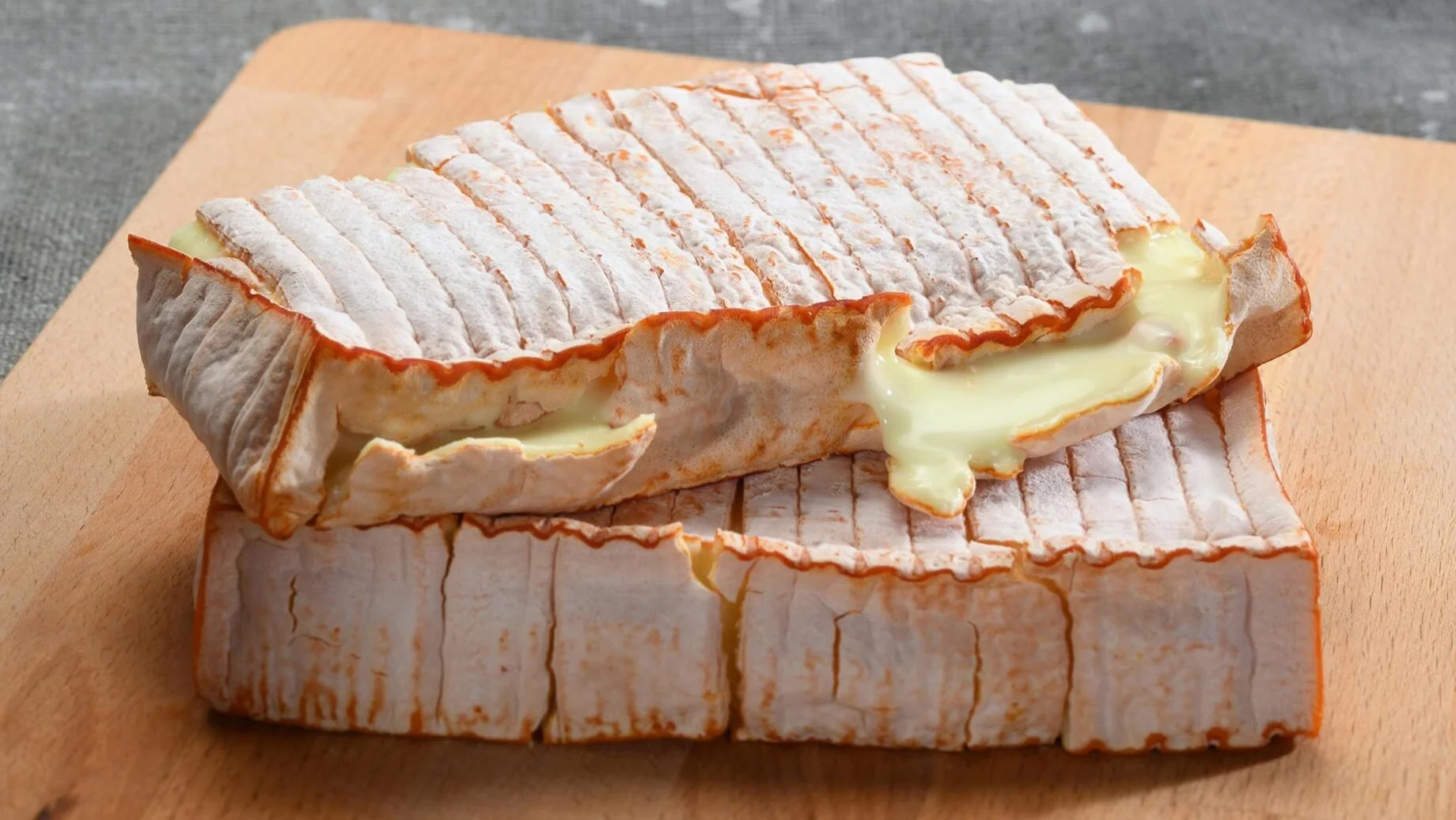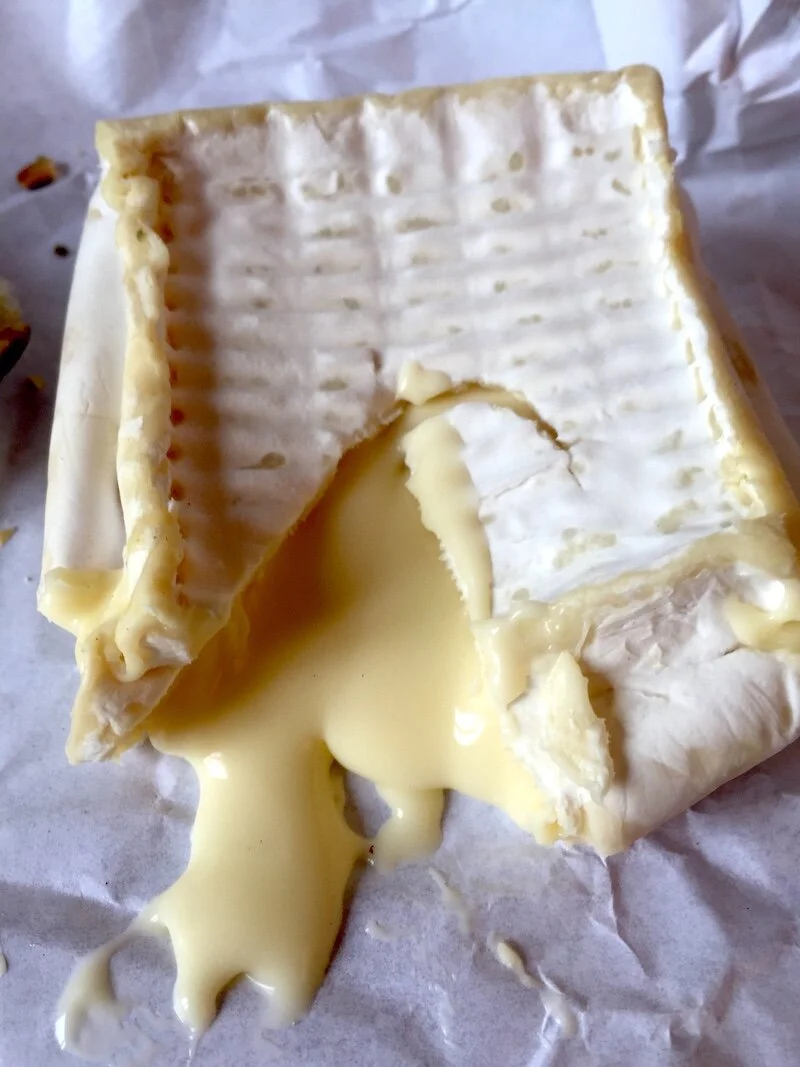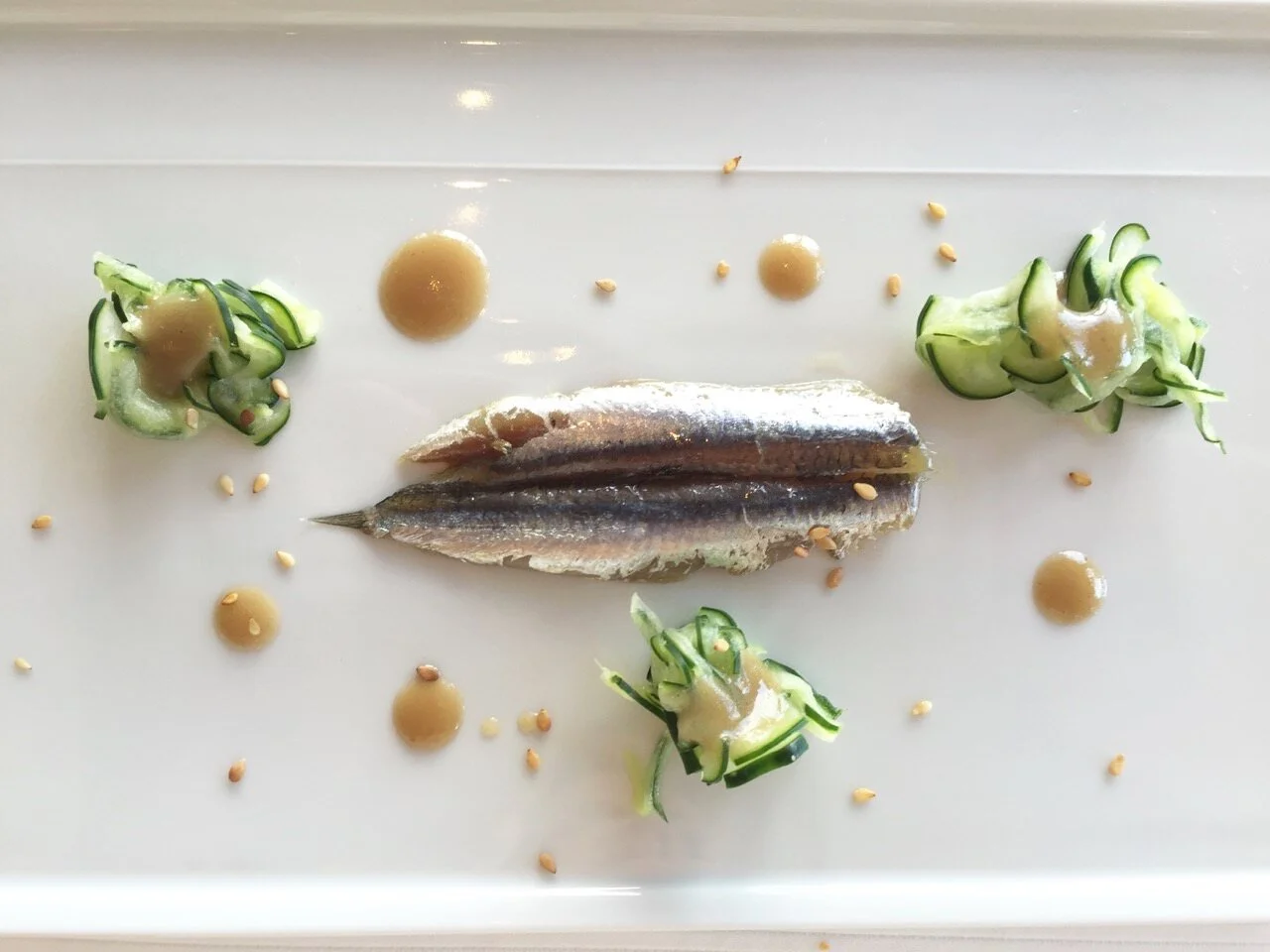Photo: Marek Uszynski/Alamy
World Cheese Encyclopedia - Each Sunday learn all about a new cheese.
This week for the launch of Volume 3 we are starting with a cheese from the homeland of our founder - Oscypek from Poland.
Photo: Joanna Moyes/Alamy
Country: Poland 🇵🇱
Region: Tatra Mountains
Made from: Sheep’s and cow’s milk
Pasteurised: No
Texture: Semi-firm
Taste: Smoky, salty, sharp
Certification: PDO
Ageing: up to 14 days
Oscypek is a spindle-shaped smoked cheese made in the Tatra Mountains region of Poland. It is a traditional cheese, made of salted sheep’s milk by special cheese-maker experts named 'Baca' (pronounced batsa).
Oscypki (the plural of Oscypek) can be found in three sizes. There are small oval-shaped versions, medium barrel-shaped versions and big spindle-shaped versions. You can also find it in other shapes, such as roosters, hearts or deer shapes. Only the largest spindle-shaped version can officially be called Oscypek according to the EU PDO certification.
Photo: Pegaz/Alamy
To meet the rules of the certification, Oscypek must be made from at least 60% sheep’s milk, must weigh between 600 and 800 g and measure between 17 and 23 cm. It can only be produced between late April to early October when the sheep live outside and graze on fresh mountain grass.
During this season, the sheep are milked twice a day. The cheese is produced by the shepherds themselves – the baca - in small huts where a fire is kept burning continuously. It takes six or seven litres of milk to make 1kg of cheese. Fresh unpasteurized milk is heated – a minimum of 60% sheep’s milk, the rest being cow’s milk. Rennet is then added and the mixture is stirred until lumps appear. It is then rinsed several times with boiling water and squeezed. The cheese is then shaped by hand and pressed into carved, wooden spindle-shaped moulds called oscypiorka. The forms are brined in barrels for 24 to 48 hours, after which they are hung from the roof to be cured in the hot smoke from the fire for up to 14 days. The oscypki are smoked using pine or spruce wood, which gives them their beautiful rich golden colour.
Photo: CC Pawel Swiegoda (Paberu)
Any cheese that is not produced according to the strict PDO criteria must be sold as serki góralskie (highland cheese).
The paste of Oscypek is a creamy white colour with a rubbery texture a bit like mozzarella but quite firm. The aroma is smoky and the taste is salty, briny and smoky with a hint of chestnuts.
History
Oscypek’s history is said to stretch as far back as the Vlachs, a tribe that came to Podhale from the Balkans somewhere around the 12th or 13th century and brought with them the tradition of sheep herding and cheesemaking. The name oscypek probably comes from the word ‘scypać’, which means ‘to split’ in the local dialect, referring to the cheese moulds which are split into two parts. Another possible meaning of the word ‘scypać’ refers to pinching or kneading which is also a part of the cheese-making process.
The first official mention of cheese production in the Tatra Mountains was in 1416 in a document from the village of Ochotnica. The first written recipe for Oscypek was recorded in 1748.
Photo: Slow Food Foundation
According to the Tatra Museum, the patterns on the cheese made by the wooden moulds were connected to the particular function each cheese was meant to be used for. Sometimes, they were used as currency to pay the shepherds. They were also given as gifts to the Church or the King’s court.
Photo: Crown Wine & Spirits
The moulds themselves are made by the Baca from sycamore wood, as it is the only wood that doesn’t affect the cheese’s taste. The job of a Baca is very traditional and you can still find many of the cheese-maker/shepards dressed in the typical regional clothing; a woollen broadcloth coat, moccasins, a leather vest, and a characteristic black felt hat. Oscypek was granted Protected Designation of Origin from the European Union in 2008.
How to enjoy it
Traditionally, Oscypek is eaten raw, grilled or fried. Its smoky salty flavour is delicious with cranberry or lingonberry jam from the region. There are also lots of different recipes for it such as pan-fried with onions, grated and mixed with egg then fried on bread, or baked with bacon. Oscypek pairs well with a local Polish beer or a shot of Polish vodka.
Sources: Wikipedia, BBC.com, cheese.com, cookingtheworld.com, Slow Food Foundation, Crown Wine & Spirits
Have you always dreamed of becoming a better cook? Now you can with our online video cooking classes


































